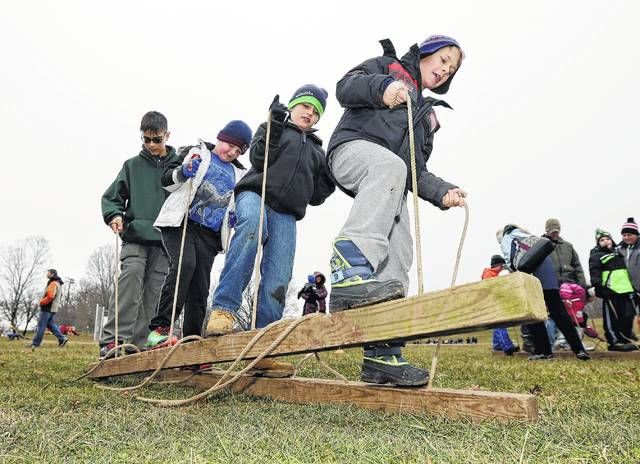Click here to subscribe today or Login.
If you’re itching for outbreaks of the polar vortex and waist-deep snow, the upcoming winter might not be to your liking. And, thanks to climate change, the odds of brutally cold winters are decreasing.
For the third consecutive year, the nation — on balance — should expect warmer-than-normal temperatures, according to the National Weather Service, which released its winter outlook Thursday.
The Weather Service favors above-average temperatures for the southern two-thirds of the Lower 48, including the Mid-Atlantic. Only a sliver of the Northern Plains and Pacific Northwest is expected to experience colder-than-normal readings.
The mild forecast follows back-to-back lackluster winters across the nation.
Last winter was practically the winter without one. Spring arrived weeks ahead of time, and normally frigid Chicago basked in record 70-degree warmth in February. It ranked as the sixth-warmest winter on record.
The winter before, except for the blockbuster January snowstorm along the East Coast, the winter was tame, ranking as the warmest on record. Temperatures surged through the 70s to the Canadian border on the East Coast’s warmest-ever Christmas Eve.
Climate warming from rising concentrations of carbon dioxide is exerting an effect on winter temperatures, according to Mike Halpert, deputy director of the weather service’s Climate Prediction Center.
“It does undoubtedly play a role,” he said Thursday. “The increase in CO2 factors into our model forecast.”
While predicting generally warmer-than-normal conditions, Halpert stopped short of forecasting a third straight exceptionally warm winter, like the past two.
“The odds of seeing three top 10 [warmest winters in a row] is reduced, not eliminated,” he said. “We’re not anticipating the kind of record warmth we’ve seen the last two winters.”
He also said that while winters are warming, on average, natural variability plays the dominant role in the ultimate outcome of the season’s temperatures.
Still, Halpert said “there was nothing to indicate” the nation will have punishing outbreaks of the polar vortex, as experienced during the winter of 2013-2014. But he wouldn’t rule out some penetrating outbreaks of extreme cold, explaining they usually can’t be predicted until about a week in advance.
Halpert said the “driving force” behind the winter outlook is the forecast development of a weak La Nina event, characterized by a cycling cooling of water over the tropical Pacific Ocean.
“If La Nina conditions develop, we predict it will be weak and potentially short-lived, but it could still shape the character of the upcoming winter,” Halpert said. “Typical La Nina patterns during winter include above-average precipitation and colder-than-average temperatures along the northern tier of the U.S., and below-normal precipitation and drier conditions across the South.”
During La Ninas, the prevailing storm track usually is through the Ohio Valley, which cuts back the chances of crippling snow events along the Interstate 95 corridor from the Mid-Atlantic to New England.
“Usually the Mid-Atlantic sees less snow than normal,” Halpert said.
The areas most likely to contend with major winter storms span from the Northern Rockies into the Great Lakes, according to the Weather Service.





